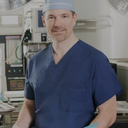Posted underGynecomastia Surgery q&a
Is Laser Surgery the Most Effective Form of Male Breast Reduction?
What natural, non-surgical methods that will produce the same results as surgery for male breast reduction?
Answers (13)
From board-certified doctors and trusted medical professionals
More Gynecomastia Surgery Questions
See all Gynecomastia Surgery Q&AWE SEND PRETTY
EMAILS
What’s trending? Who’s turning heads? Which TikTok myths need busting? We’ve got you. No fluff, no gatekeeping—just real talk. Get our free, unfiltered newsletter.







